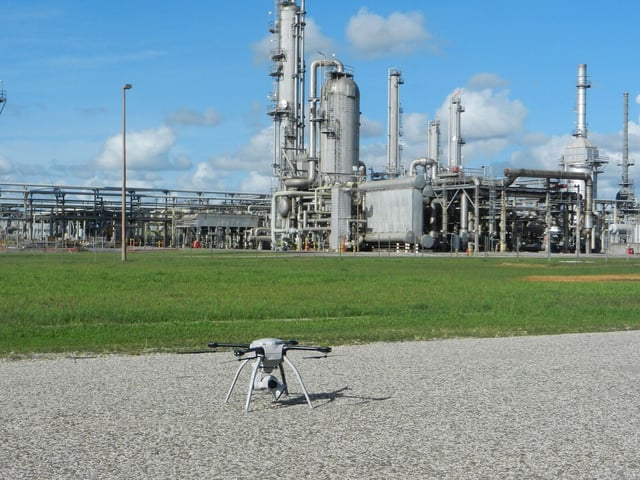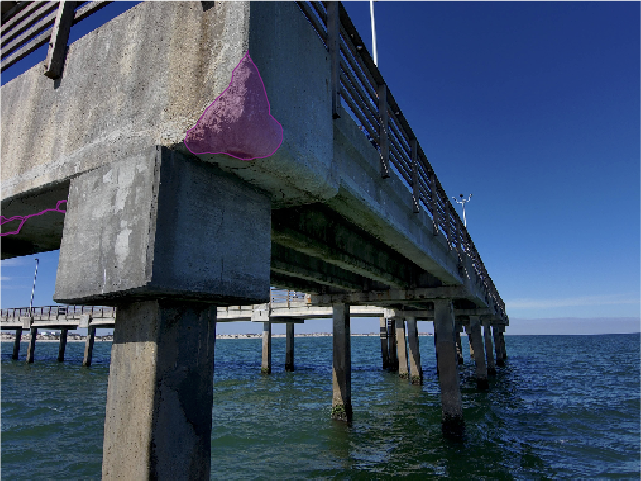Drones equipped with a combination of sensors are revolutionizing the oil and gas inspections. At the moment, the drones with thermal imaging, photo, and video cameras as well as gas sniffers and other sensors, are performing a variety of inspection roles. The mobility and sensors allow the drones to analyze the oil and gas pipelines and facilities for existing and potential defects.
A number of energy companies are already deploying UAVs to inspect their rigs, pipelines, and other structures. And these have a number of benefits that range from increasing safety and speed of gathering data, to cost-cutting and improved efficiency.
We believe that the UAV-based inspections are the way to go for many industries. And below are our reasons why we love drone-based oil and gas inspection. And you should, too.
Access difficult to reach areas
Drones have the ability to reach locations where humans cannot because of challenges such as limited space, rough terrain, and hostile environment or associated risks. Just like in building inspections, the drones have the ability to get very close to surfaces of the pipelines and other equipment. This allows them to capture high-quality photos and thermal images from several positions and angles.
Improved safety
The traditional inspections are risky as where workers have to hang under ropes and wires, encounter hostile weathers and conditions, and sometimes risk exposure to hazardous chemicals and environments. The severe and uncomfortable conditions prevent the technicians from gathering all the data.
By programming the drone with the flight path along the pipeline, the operator can easily and safely inspect the whole length of the pipeline as well as other oil and gas infrastructure from a safe distance. This eliminates the need for the workers to go to the forest, contaminated areas or other dangerous places where the pipeline passes.
Even after a hurricane or other catastrophe, it is safest to first send the drone to the affected area before sending the technicians. The drones can report back to the control office or area with images and videos of the area as well as the type of gasses it detects in the atmosphere.
Drone-based inspection help in cost cutting
The traditional oil and gas inspections require heavy investments in terms of workers, vehicles, helicopters and inspection gear. In addition, there are associated insurance costs for both equipment and personnel. The company must also incur additional costs for vehicle maintenance and field crew allowances.
Employing drones for oil and gas inspections helps organizations to reduce costs in many ways. First, the company will reduce the number of field crews, equipment, and vehicles. In addition, there is no need to hire helicopters as well as allowances for the field technicians will be greatly reduced.
The drones-based oil and gas inspections requires less inspection equipment and have the advantage of accessing rough and hostile terrains and environments.
Mobility and ease of use
The mobility, speed, ease of use and efficiency of drones will provide the oil and gas companies with the opportunity to collect data at large scale. Since the drones can access even the most difficult areas, it makes it possible to inspect the whole pipeline and its surrounding, just in case there is need to analyze the extent of a leakage.
Increase frequency of inspections
Since drones are small and inexpensive to operate, you are able to carry out more inspections per month, without shutting down operations and affecting production. In traditional methods, you need to schedule for a shutdown and assemble a number of workers, vehicles, helicopters and other inspection equipment.
Ability to detect spills and environmental impact
When there are leakages and spills, the drone can safely monitor and identify where there is contamination, and the direction the liquids are flowing to. This will help in controlling the flow as well as putting in place the necessary protection and rescue measures.
A drone can accurately track the contamination in many ways that the traditional methods cannot. For example, without the drones, it will require clearing the remote areas or make temporary roads for the personnel to reach and inspect affected areas. However, the drone identifies much faster and the workers will only need to clear that particular area. The traditional method would require clearing a much wider area unnecessarily.
Capturing and availing real time data
Using drone equipped with a combination of visual, thermal and gas sniffing sensors, you will be able to discover almost all the potential defects and hazards along the oil and gas infrastructure. The drones will enable you to monitor the production and transmission facilities and warn you in good time to allow you take action in good time.
The timely data helps the company to repair the leaks and defects before they reach dangerous levels.
Tags
Oil and Gas




.png)
